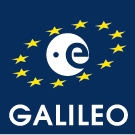naviBelt – the belt that changed lives
Success
stories

Can people learn to use an additional sense through training?
This question kicked off the amazing journey of feelSpace‘ naviBelt in 2005. Since then, several scientific studies, projects and founder activities have been initiated by the team of mostly female cognitive scientists. Today, the tactile naviBelt of feelSpace is a reliable and high-quality navigation device, tailored to meet the needs of blind and visually impaired people.

A pioneering idea in a lunchbox
Prof. Peter König and a team of students started the project at the University of Osnabrück in 2005. Driven by several questions, they researched the possibility of implementing an artificial sensory organ. Using the caps of lemonade bottles, hot glue and a lunchbox as a casing for the electronics, they soldered and tinkered their first compass belt prototype. Not very handy – but pioneering .

From science to market by boosting the business
Scientific evidence clearly showed that compass belts were not only interesting research devices, but could tremendously simplify navigation problems faced by 1 million blind and visually impaired people in Germany alone. Thus, the idea was born to take the tactile belt-form scientific device to product. In 2015, feelSpace successfully applied for EXIST and the ESA BIC Darmstadt programme, which provided valuable coaching, know-how and of course – funding
Finally, good vibes: Sensors and smartphone GNSS
Not tailored to everyday usage by consumers, the scientific prototypes were heavy (up to 1,1 kg), bulky (up to 4,5 cm thick) and difficult to recharge. Several years later, the new models are up to 50% flatter, easier to recharge and can be worn almost invisibly underneath clothing. A power bank prototype has been replaced by a small internal battery (1400 mA/h). Regarding GNSS, the team had to decide between an embedded navigation module (u-blox antenna module) or a smartphone’s GNSS capability. feelSpace decided to go for the non-integrated version, because GNSS receivers within smartphones are improving quickly and most visually impaired customers have one already. As a consequence, the cost of production decreased significantly. Additional benefits: internet access via 3G and 4G network and automatically deployed updates.
Reliable connection required – time for Bluetooth
Since smartphones are carried in the user pockets or backpacks, the distance between smartphone and belt is <10 m, so Bluetooth Low Energy was the right choice for connectivity. The final product uses 16 vibration elements and features 3 miniaturised motion sensors. To transform the sensor information into tactile navigation instructions, feelSpace uses a sensor fusion algorithm. Even if the magnetic field is disturbed, i.e. in a lift or when crossing rails, the algorithm remains reliable, because it usually compensates for these distractions to the sensors.

Galileo enables secure navigation. For blind and impaired people, precise positioning and navigation information is important. The first versions of the tactile belt only used a compass to indicate magnetic north. Nowadays, GPS and Galileo are the door opener for high precision positioning – and for creating a lifesaving 6th sense!